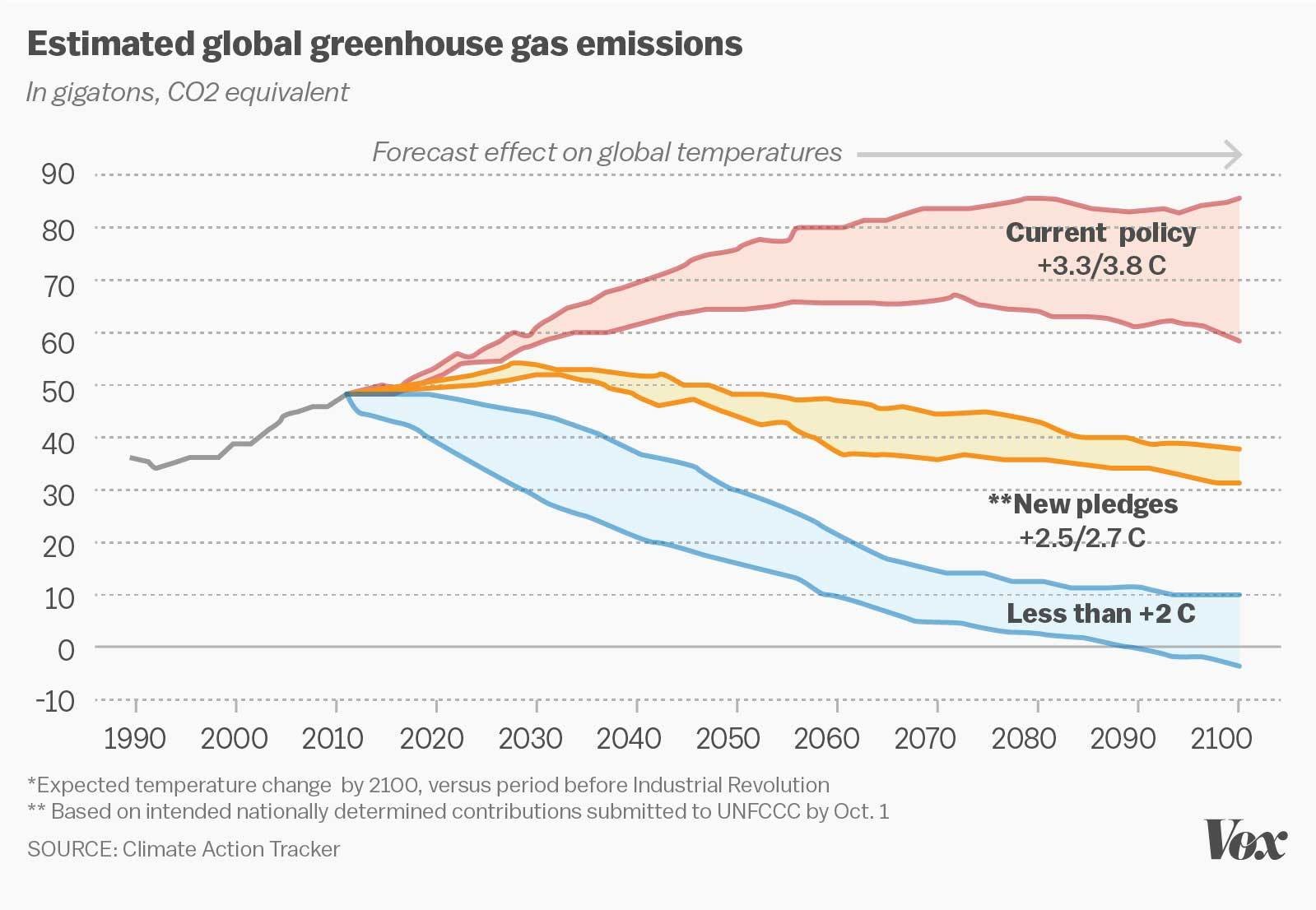It’s official. The Paris Agreement on climate change is a done deal.
It entered into force last Friday, less than a year since the agreement was “adopted” by 195 countries at COP21 in Paris. In diplomatic circles, this is fast. Few dared to believe it was possible.
This is the direct result of remarkable leadership by many countries. Most notably, China and the United States – the economic power houses of the world – buried old tensions to show that some things matter more than day-to-day geopolitics. India stepped forward too, aligning its international posture with its domestic need for clean energy and sustainable growth.
These countries and their leaders recognised that our planet – and the threat of climate change – would outlast their tenures and overshadow any other legacies they might create.

Yet, despite these positive signals, it is smart to be aware of the reasons the Paris Agreement could fail. Here are the top five:
1. If we believe the job is done
If politicians, the media or the public mistakenly believe that climate change has been fixed because the Paris Agreement is now in place, it will fail. It could be likened to registering for a sporting event but never actually doing the training, lining up and competing.
The agreement was designed as a framework for cutting greenhouse gas emissions. Much of the actual work to make our economies and societies low carbon and climate resilient still needs to be done.
Before Paris, countries pledged how much and how fast they would cut their emissions. Every five years, they will have an opportunity to increase the size of their pledge. The expectation among experts is that new technologies, business models, investment landscapes and research will be developed and these will enable governments to increase their pledges to levels that will keep global warming “well below 2°C”.
Ongoing attention from both the general public and decision-makers will be needed to continue creating favourable conditions for climate action. As with any big undertaking, momentum matters.
2. If responsibility stays with the diplomats and environmentalists
The successful negotiation of the Paris Agreement was the culmination of many years’ hard work by countless numbers of diplomats and environment officials. However, to deliver the actual work of cutting emissions, governments will need the support of finance, industry, infrastructure and energy ministers – as well as the private sector – to bring the agreement to fruition. The skills needed to negotiate the agreement are different to those needed to deliver it.
The economic growth opportunities are there for the taking. For example, investment in renewable energy continues to grow. In 2015 it was US$286 billion, compared with just US$130 billion for fossil fuel power plants. Forecasts suggest US$12.1 trillion will need to be invested in the next 25 years – now renewables make economic sense there is no reason for that new energy infrastructure to be anything other than clean.
The global green bonds market is also growing. Total issuance was US$42 billion in 2015 and is already at US$61 billion this year, demonstrating there is investor appetite for low-carbon growth, especially now a long-term and legally binding goal is in place. Crucially, ratings agencies like Moody’s and S&P have announced plans to factor climate risk into credit assessments for corporate and infrastructure sectors.
The investment landscape is shifting. Governments doing their jobs well will position their economies to take full advantage.
3. If well-funded vested interests are able to derail national action
Much has been made of corporations giving money to anti-climate action lobby groups – either directly or as so-called dark money. Leaders in industry who champion climate action will need to do it in all forums and continue to push the fact it involves an element of “business as non-usual”, inspiring others to join them. If their industry associations lobby or spend money funding climate denial, they should speak up, prevent it or leave.
However, this is only part of the picture. US Senator Sheldon Whitehouse has pointed out that corporations and industry associations that support climate action need to be proactive and put climate change on their lobbying agenda.
Globally, we’ve seen a recent tilt towards nationalism in some societies, which opportunistic politicians may be tempted to exploit for short-term personal gain (whether funding or votes) by portraying multilateral cooperation such as the Paris Agreement as opposed to their national interest.
But, the bottom-up approach of the Paris Agreement means each country is responsible for its own commitments and action. There is now widespread recognition that addressing climate action is in each country’s national interests, and this can only be done if everyone works together. Leaders in industry, civil society and government may need to remind voters of this reality – helping to demonstrate the positive benefits that it delivers for individuals as well as the world at large.
“
Ongoing attention from both the general public and decision-makers will be needed to continue creating favourable conditions for climate action.
4. If the international community gets bogged down in ‘process’
There are many very important details still to be worked out underneath the broader framework of the Paris Agreement. These include agreeing mechanisms for the enhanced transparency framework (data collection and reporting to keep governments accountable), the provision of climate financing to developing countries and capacity building. They deserve proper treatment.
The risk here is that stakeholders – conditioned over 20 years of tough negotiations – inadvertently default into old patterns and let new and overly excessive negotiation cycles emerge on process, slowing down delivery of the commitments made in the Paris Agreement. Just as there needs to be better ways of doing business to realise carbon reductions, new systems thinking needs to be brought into international organisations to fast-track progress.
5. If millions of people and businesses do millions of good things … on their own
Not all climate actions are equal, nor do they take place in a vacuum. History is full of good ideas and superior technologies being surpassed by inferior ones due to broader political, economic and social factors. Policy-makers, technology developers, business leaders and civil society will need to approach the process of developing and implementing climate solutions with an open mind and a spirit of collaboration.
Without such a joined-up approach, we are unlikely to see solutions developed at either the scale required to truly change whole economic and social systems or at the pace required to meet the Paris Agreement’s goal of keeping global warming to well below 2°C.
There is a fundamental need for platforms where diverse stakeholders can interact and collaborate effectively. International organisations, civil society and business associations will need to channel resources into providing or supporting these platforms and ensuring they are effective at meeting their objectives.
In the unstable landscape of geopolitics and international relations – made even more potent by the impacts of climate change – there is always a risk that the next “black swan” event is just a gunshot, election or tweet away.
However, some of the biggest threats to the success of the Paris Agreement – and our ability to stop climate change before it is too late – are ones we already know about. And those are the ones we can do something about – starting today.
Jahda Swanborough is Project Lead, Climate Change Initiative, World Economic Forum. This post is republished from the World Economic Forum blog.









